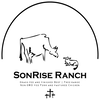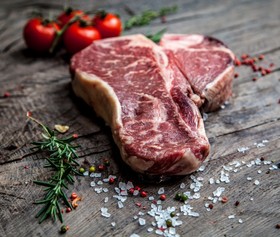If you've been around SonRise for more than 5 minutes, you know we are zealots for environmentally conscious, personally responsible food production. To be honest, I never thought I would find myself here. Our type - the Cowboys - don't usually stop to see a flower in bloom, or take the time to frolic in wheat fields.
Its usually "boots and spurs". Big diesel trucks and spittoons - "yeh haw"... "get them dawgees in" and ropen' calves.
Were sort of weird here at SonRise - we don't fit the cowboy, rough and tumble mold (but we are Cowboys, none-the less), nor do we fit into the "envro-wako" mold either (but, just for the record, I do love trees). We are a hi-bred mixture of libertarian-environmentalist, lunatic Ranchers.
My philosophy is one of balance. We are big on personal responsibly, liberty and care for the creation. I feel a deep concern for were "we" are going. I am not a full-on "Green New Deal" type, nor do I believe we should coat the earth in glphosate. I think we need to take a real hard look at our food systems and make a difference at the ground level - no pun intended. And if you know nothing else about my philosophy, know this - I firmly believe Government does not have the answers! You needed look any farther than the USDA's disastrous polices thus far, to know and understand that real healing of our earth will not happen at the hand of the bureaucrat or legislators. You wont get change, like we want, with more rules - you will get it with dollars spent in the right direction. Don't like Cargill, or Perdue or Tyson's raping of the earth - well then, don't give them a single red cent. Invest in a ecologically minded, non-chemical, non-industrial Farm or Ranch.
Ok. Rant over... sorry.
Anyway, the trip last week was really productive. We originally ventured out to see a unique irrigation system located at a friend's Ranch in Wyoming. He is one of the few Ranches that operate like we do and we really enjoyed seeing him. Our upcoming San Diego operation will use his irrigation system to grow grass for our finishing operation, and you (our beloved customers and followers) will be able to come out and see it in real time. Imagine that - getting to see where your food is grown!
We can't wait... it's going to be great.
So then, all the destruction of our grasslands in Wyoming and the abysmal failures of the Forrest Service in Yellowstone, got me to thinking about our Saticoy grazing unit (Unit IV) just north of L.A. It burned this last summer and it was a huge blessing. The following videos will explain why.
Here is how this works.
Burn. Manage with Cattle. Re-grow the ecosystem. Remove the Cattle. Re-balance (add or subtract Cow to balance growth)
Its really simple and requires thought, effort and vision, but, it works.
How we do this is half "Art", half "Science" and a whole lot of "figure it out as you go". We move the entire herd, water, fence, electric charges, hoses, etc - all at once. We rebuild it in the next rotation without allowing the cows to "back Graze" or re-trample the area they just left.
This ecological messaging is the perfect method to keep the grass healthy and vibrant.
Think of it like this... you have some money in the bank (your grass base) and you make interest on it each month (your grass growth). You want to purchase something, so you have two choices; first, you can empty your account and spend it all... but that creates a problem. If you do that, you will not be receiving interest payments any longer.
Nature is a neat creature. In this case she will be kind enough to replace your base savings amount each year. But it will only be enough to barely get by - about the same as all the interest combined. You'll never get ahead.
Option two: Try just living off the interest. Reduce the number of Cows to match just what the growth is on the pastures. Don't try to graze all the grass. Leave a whole bunch. In fact, I tell my students to feel like they are "wasting grass" when they leave a pasture. A little too much is better than not enough.
The next year (during the rebound/regrowth season), when nature makes her annual deposit, it will just add to your nest egg. This is a mentality shift from cattle management (being a Cowboy) to grass management (being an "environmentalist")
Back to the task at hand. We want Ranchers to act like Ranchers. Work. Move your cattle. Make a difference. Think. Behave globally. Stop leaving cattle on pasture to compress soil, create erosion and destroy the ecosystems they were created to enhance.
And for Pete's sake - if it burns, get cattle on it within the next growth cycle so the brush doesn't come back to create another burn hazard.


 RSS Feed
RSS Feed